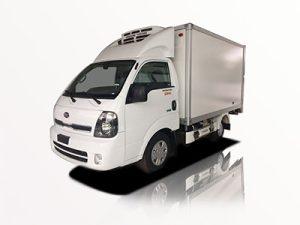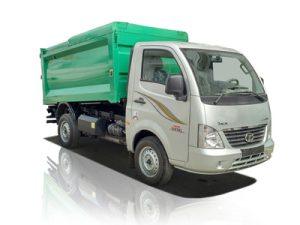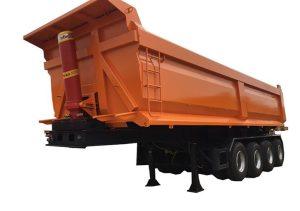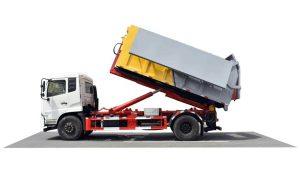Monday to Saturday - 8:00 -17:30
Ultimate Guide to Self-Loading Grapple Trucks
Introduction
Self-loading grapple trucks are rapidly becoming an essential tool in various industries, including construction, forestry, and waste management. These versatile vehicles combine a flatbed truck with a hydraulic grapple, enabling efficient loading and transporting of heavy materials. In this comprehensive article, we’ll explore the various aspects of self-loading grapple trucks, including their features, benefits, applications, and much more. Whether you’re considering purchasing one for your business or simply want to learn more about them, this guide will provide you with valuable insights.
What is a Self-Loading Grapple Truck?
A self-loading grapple truck is a specialized vehicle designed to load and transport heavy materials effortlessly. It features a truck chassis, a flatbed for carrying loads, and an attached hydraulic grapple arm that enables loading and unloading of materials without the need for external equipment. This self-sufficient design improves efficiency and reduces labor costs.
Key Components of a Self-Loading Grapple Truck
- Truck Chassis: The base vehicle that supports the entire structure.
- Flatbed: The loading area where materials are placed.
- Hydraulic Grapple: The powered arm that lifts and manipulates heavy items.
- Operator Controls: The mechanism through which the driver controls the grapple.
How Does a Self-Loading Grapple Truck Work?
Self-loading grapple trucks operate using hydraulic systems that provide the power needed to move the grapple arm. Here’s a simple breakdown of the operational process:
- The truck approaches the material to be loaded.
- The operator uses controls to extend the grapple arm.
- The arm opens and grips the material securely.
- The arm lifts the material and positions it over the flatbed.
- The operator lowers the load onto the flatbed, and the grapple releases the material.
Benefits of Using Self-Loading Grapple Trucks
Self-loading grapple trucks offer numerous advantages that can significantly enhance productivity and efficiency in various sectors.
Improved Efficiency
By allowing a single operator to load and unload materials without additional labor, these trucks streamline operations and save time.
Cost-Effective
Reducing the need for additional loading equipment means lower operational costs. This can contribute to a more sustainable bottom line.
Versatility
Self-loading grapple trucks can handle a wide range of materials, including debris, logs, and construction waste, making them ideal for multiple applications.
Reduced Labor Needs
Fewer workers are needed on-site for loading and unloading tasks, which can significantly reduce labor costs and simplify project management.
Common Applications of Self-Loading Grapple Trucks
Construction Sites
Self-loading grapple trucks are invaluable on construction sites where heavy materials such as gravel and concrete need to be relocated. Their ability to load materials directly from the ground can enhance site efficiency.
Forestry and Logging
In forestry, these trucks are used to load logs for transportation. Their grapple arms can easily handle irregularly shaped and heavy logs, making them suitable for logging operations.
Waste Management
In waste management, these trucks can effectively pick up and transport debris, scrap, and other materials, reducing the need for multiple trips to the landfill.
Landscaping and Green Waste Collection
Self-loading grapple trucks are also used for landscaping projects to handle large amounts of green waste, branches, and other organic materials efficiently.
Choosing the Right Self-Loading Grapple Truck
Selecting the right self-loading grapple truck for your needs can be a challenging task, given the variety of models available. Here are some key factors to consider:
Weight Capacity
Evaluate the maximum weight the truck can safely transport and ensure it meets your operational needs.
Grapple Specifications
Consider the size and design of the grapple arm. Some models may offer specialized grapple designs for certain materials, such as logs or construction debris.
Hydraulic System
The efficiency of the hydraulic system plays a crucial role in operation speed and effectiveness. Ensure the system is robust and reliable.
Brand Reputation and Reviews
Research different brands and models, looking at user reviews to gain insights into performance and reliability.
Warranty and Support
A solid warranty and customer support from the manufacturer are essential for ensuring a smooth ownership experience.
Maintenance Tips for Self-Loading Grapple Trucks
Regular maintenance is vital to ensure the long-term reliability and efficiency of your self-loading grapple truck. Here are some essential maintenance tips:
Regular Inspections
Perform routine inspections of the hydraulic system, electrical components, and the overall structure of the truck to catch any potential issues early.
Hydraulic Fluid Checks
Regularly check and change the hydraulic fluid as needed to ensure smooth operation. Contaminated fluid can damage the hydraulic system.
Cleaning
Keep the truck clean from debris and build-up to prevent corrosion and mechanical issues.
Tire Maintenance
Inspect tire conditions regularly and maintain proper tire pressure to ensure safety and performance.
Cost of Self-Loading Grapple Trucks
The cost of self-loading grapple trucks can vary based on several factors, including brand, specifications, and whether the truck is new or used. Here’s a general breakdown of costs:
| Type | Price Range | Average Price |
|---|---|---|
| New Trucks | $75,000 – $150,000+ | $100,000 |
| Used Trucks | $30,000 – $80,000 | $50,000 |
| Leasing Options | $1,000 – $3,000/month | $2,000/month |
Frequently Asked Questions
What types of materials can a self-loading grapple truck handle?
Self-loading grapple trucks can handle a variety of materials, including logs, scrap metal, construction debris, and landscaping waste.
Is a self-loading grapple truck easy to operate?
Yes, once properly trained, operators can efficiently use self-loading grapple trucks. Many models are designed with user-friendly controls.
How often does a self-loading grapple truck need maintenance?
Regular maintenance should be performed based on the manufacturer’s recommendations, typically every 500 operating hours or annually.
Are there safety features in self-loading grapple trucks?
Yes, modern self-loading grapple trucks are equipped with various safety features such as load sensors, emergency stop controls, and stability monitoring systems.
Can I rent a self-loading grapple truck?
Yes, many equipment rental companies offer self-loading grapple trucks, allowing you to use them for short-term projects without making a full purchase.
What is the average lifespan of a self-loading grapple truck?
The lifespan of a self-loading grapple truck varies based on usage and maintenance, but they typically last between 10 to 20 years with proper upkeep.









